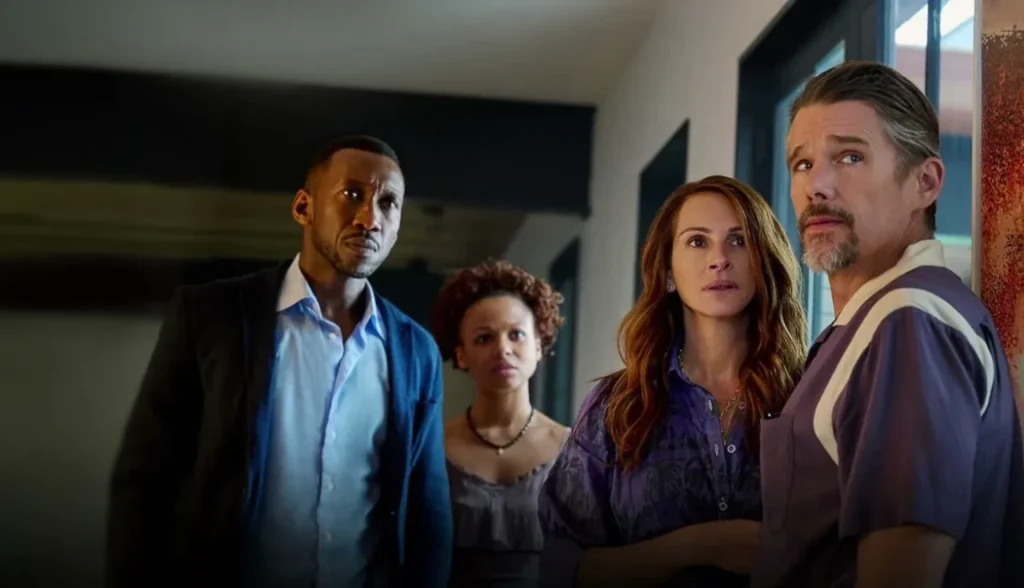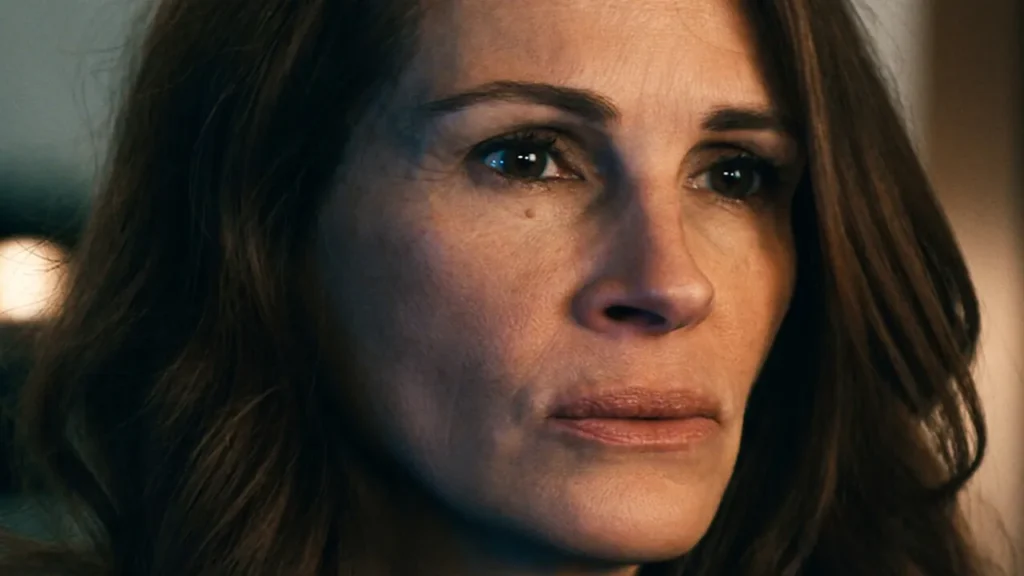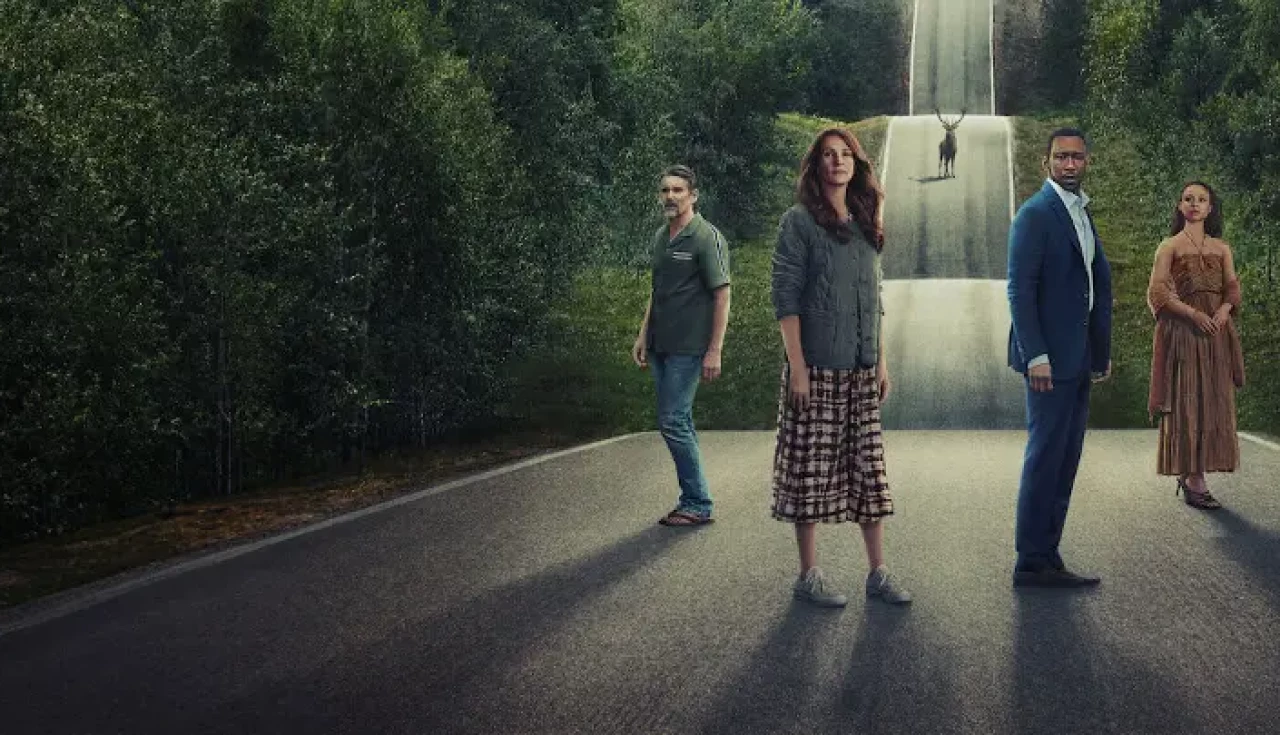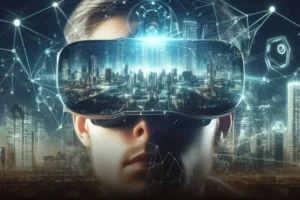Entertainment
film analysis, apocalypse digital, Social criticism, popular culture, Ethan Hawke, Netflix film, final of the film, Friends, Julia Roberts, Mahershala Ali, Myha’la Herrold, the world after us, veiled racism, reflection on modernity., Sam E-mail, Series, apocalyptic thriller
Raphael
5 months ago
0 Comments
The World After Us: Full Review of Netflix Movie Challenges Apocalyptic Conventions
“The World After Us" is a movie that has been gaining featured on streaming platforms, especially on Netflix. Based on the best-seller novel Leave the World Behind, by author Rumaan Alam, the long run by Sam Esmail proposes a deep reflection on the fragility of human relations, the technological advancement and the uncertainties of a world on the verge of collapse.

In this article, we will explore the plot, the core themes, the ambiguous ending and the technical aspects of this production, inviting the reader to immerse in a universe where the apocalypse is as uncertain as the moral dilemmas accompanying him.
Film Synopsis and Context
The narrative of "The World After Us" focuses on a New York family who decides to rent a luxurious house for a weekend of rest. Amanda (played by Julia Roberts) and Clay (Ethan Hawke) seek, along with their children, a refuge that offers the promise of peace and comfort. However, this apparent peace is interrupted by the unexpected arrival of two strangers: George (Mahershala Ali) and Ruth (Myha’la Herrold). These visitors claim to be the real owners of the residence and bring with them the news of a widespread blackout, the result of a devastating cyber attack.
As chaos settles, the limits between security and threat become thin. The film explores not only the immediate tension of an imminent crisis, but also questions the trust deposited in technological systems and institutions that seem unable to protect humanity at critical moments.
Central Themes and Social Reflections
1. The Critique of Modernity and Capitalism
One of the central points of "The World After Us" is the subtle, but contentious criticism of the structures of power and contemporary capitalism. The narrative suggests that blind faith in the technology and efficiency of financial systems can become a nightmare, especially when these same systems fail. The collapse caused by a cyber attack evidences how modern society is vulnerable to failures that, at first, seem unlikely.
The tension between the illusory security provided by technology and the brutal reality of a world without modern infrastructure becomes an invitation to reflection. The film reminds us that, behind innovations, there is an inherent fragility that can expose inequalities and the dehumanization that permeates social relations.
2. Sailed Racism and Class Conflicts
Another theme that is highlighted is veiled racism and class conflicts. Amanda, represented by Julia Roberts, demonstrates distrust towards visitors, even before their plausible claims. This attitude reveals a prejudice that, although unexplained, permeates interpersonal relationships and reinforces social stereotypes.

Amanda's cold and suspicious reception of George and Ruth symbolizes the racial and cultural barriers that persist, even in crisis situations. This dynamic is intensified by the contrast between the apparent safety of the home and the external threat, where prejudices are revealed sharply and unexpectedly.
3. The Digital Revelation and the Uncertainty of the Future
The cause of collapse is wrapped in mystery and ambiguity. The film suggests that apocalypse may have been triggered by a large proportion cyber attack, capable of paralyzing communication, transportation systems and even financial institutions. This hypothesis, besides being an element of suspense, reflects contemporary concerns about the power and vulnerability of technology.
The uncertainty about the origin and nature of the disaster reinforces the idea that the fear of the unknown is often more terrifying than chaos itself. The silence around the "why" of collapse allows each viewer to interpret events in his own way, leaving a space for debates and reflections on the fragility of our modern way of life.
4. The Role of Animals as Transformation Symbols
Throughout the film, scenes that show animals acting unusually – like deer migrating mass or flamingos appearing unexpectedly – serve as visual metaphors. These symbolic moments suggest that the nature, as well as humans, reacts instinctively to drastic changes.
The convergence between animal behavior and human panic points to an intrinsic connection between all forms of life before chaos, reinforcing the idea that when the system collapses, the barriers between the civilized and the wild dissipate.
The Impact of the Open Final
One of the features that has most generated debates among viewers is the ambiguous ending of the film. Instead of offering a clear conclusion, "The World After Us" chooses to leave some questions in the air, intensifying the mystery and feeling of insecurity.
Interpretations Divergent
The film's ending does not definitively reveal the fate of the characters, especially Archie, the eldest son of Amanda and Clay, whose situation remains uncertain. This deliberate choice of not binding all loose ends invites the public to reflect on the multiple possible deployments. Each viewer can imagine different scenarios, which in turn enriches the debate on the meaning of the film and the risks of living in an era of technological and social uncertainties.
The Insertion of Cultural Elements: The Reference to "Friends"
Another curious aspect of the ending is the reference to the series Friends.. In a moment of tension, the display of the last episode of the popular sitcom serves as a counterpoint to the gravity of events. This choice not only breaks the suspense monotony, but also works as a reminder that even in the midst of chaos, popular culture can offer an escape valve and a sense of normality.
The presence of "Friends" in the outcome suggests that, despite difficulties and instability, art and culture remain as pillars that help sustain humanity. This duality between desolation and hope is one of the strengths of the film, because it allows the audience to identify with the characters and question their own role in a constantly changing world.
Technical and production aspects
Direction and Screenplay
Directed by Sam Esmail, known for his ability to create engaging and visually impactful narratives, "The World After Us" stands out for both the technical quality and the depth of the script. Esmail manages to balance high-voltage moments with introspective scenes, creating an atmosphere that keeps the viewer constantly alert and immersed in history.
The script, also signed by Esmail, sensibly adapts Rumaan Alam's novel, preserving the essence of the dilemmas proposed by the book. The choice of not offering easy answers, especially in relation to the end, reflects a desire to provoke the public and to stimulate debates on the future of society.
Elenco and Performances
The cast is one of the major highlights of production. Julia Roberts, Ethan Hawke, Mahershala Ali and Myha’la Herrold deliver striking performances that contribute to the construction of complex and versatile characters. Each actor can subtly transmit the anguish and contradictions of a world that is threatened by forces beyond human control.
The dynamics between the characters are carefully built, highlighting internal conflicts and social tensions that emerge when people from different backgrounds are forced to live under extreme circumstances. The performance of Mahershala Ali, in particular, is noteworthy, bringing a depth that transcends the simple figure of the "strand" that arrives to claim his space.
Cinematography and Soundtrack
Visually, the film is a show. The cinematography, marked by framing that highlights both the grandiosity of the scenarios and the most intimate details of the characters, creates an environment that oscillates between the serene beauty and the restlessness of the impending apocalypse.
The soundtrack perfectly complements this duality, using compositions that increase tension during times of crisis and at the same time offer moments of relief for the public to breathe. This combination of technical elements is fundamental to keep the narrative rhythm and involve the viewer from beginning to end.
Public Reception and Cultural Impact
Since its release, "The World After Us" has divided opinions and generated intense debates both on social networks and on specialized criticism. The daring approach of the director and the film's open ending are often cited as positive points that stimulate reflection on contemporary issues such as technological vulnerability and racial issues.
Debates and polemics
The film not only stands out for its plot, but also for the impact it causes when addressing controversial themes in a subtle and intelligent way. Issues such as veiled racism and criticism of the capitalist system resonate with many spectators, who are reflected in the contradictions and challenges presented in the plot.
Moreover, the decision not to fully explain the events that led to the collapse of civilization generates a sense of mystery that keeps the debate alive. This ambiguity allows the public to discuss and interpret the film in different ways, creating a space for dialogues on the future of humanity in an increasingly technology-dependent world.
Influence in Popular Culture
The insertion of elements of popular culture, such as reference to the series "Friends", demonstrates that "The World After Us" goes beyond simple entertainment. The film turns into a mirror of current social contradictions, where the search for answers blends with the need to find refuge in what is familiar to us. This innovative approach makes the long not only entertain, but also provokes critical reflection on the role of art and culture in building a more conscious and resilient society.
Final Reflections
" The World After Us" is undoubtedly a film that goes beyond the traditional conventions of the apocalyptic thrillers. Instead of offering a predictable outcome, director Sam Esmail opts for an open ending, which invites the viewer to question not only the fate of the characters, but also the very future of humanity.
Through a narrative that merges tension, suspense and moments of introspection, the film exposes the fragilities of a society that deposits its unwavering faith in technology and modern institutions. The chaos that settles in the plot serves as an alert: the world, however advanced it is, remains vulnerable to disasters – whether technological, environmental or human.
Criticism of social inequalities, veiled racism and class conflicts are portrayed in a subtle but impactful way, highlighting how, even in times of crisis, prejudices and cultural barriers persist. This duality between the beauty of a world in peace and the brutality of an imminent collapse makes "The World After Us" a work that challenges the viewer to reflect on his own convictions and the future we want to build.
Invitation to Reflection
We invite you, Sergeant Diniz, and all readers, to watch "The World After Us" with an attentive look at the details. Notice how each scene, each framing choice and each dialogue carries a meaning that goes beyond mere entertainment. The film is an opportunity to reflect on the fragility of our systems and on the need to rethink the social structures that sometimes imprison us in a cycle of distrust and fear.
In addition, the work reminds us that, even in the face of an apocalyptic scenario, the culture – represented here singularly by the reference to "Friends" – has the power to reconnect with humanity and to offer an escape valve. It is a message that, however chaotic the world may seem, art and culture remain as points of union and hope.
Final and Expectation Considerations for the Future
As technology advances and uncertainties about the future intensify, works like "The After Us" gain even more relevance. They force us to face the ethical and existential dilemmas that emerge in a hyper-connected society where the simple click can trigger events of unimaginable proportions.
The film is established as a work that, although wrapped in suspense and mystery, invites a debate about the real nature of humanity. He challenges us to think: what is the price of our technological dependence? To what extent are we willing to sacrifice our values in the name of progress? And, especially, how can we find a balance between the security provided by modernity and the imperious need to preserve our human essence?
To Finalize
" The World After Us" is not just a film about the end of the world – it is an invitation to rethink the present and question the future. With a narrative that combines tension, social criticism and moments of pure reflection, the work stands out as one of the most instigating apocalyptic thrillers of recent times.
The ambiguity of the end, the criticism of power structures and the exploitation of topics such as racism and technological vulnerability transform the film into a real starting point for deep debates. He reminds us that even in the midst of chaos, there is room for hope and reflection on what really matters: our humanity.
If you haven't seen it yet, it's worth booking a time to dive into this complex, multifaceted plot. And for those who have already accompanied the film, how about revisiting some of its most impactful moments and rethinking the messages it brings?
With a clear direction, a bright cast and an approach that challenges the clichés of the apocalyptic films, "The World After Us" is consolidated as an indispensable work for those who seek not only entertainment, but also a profound reflection on the world in which we live.














Post Comment